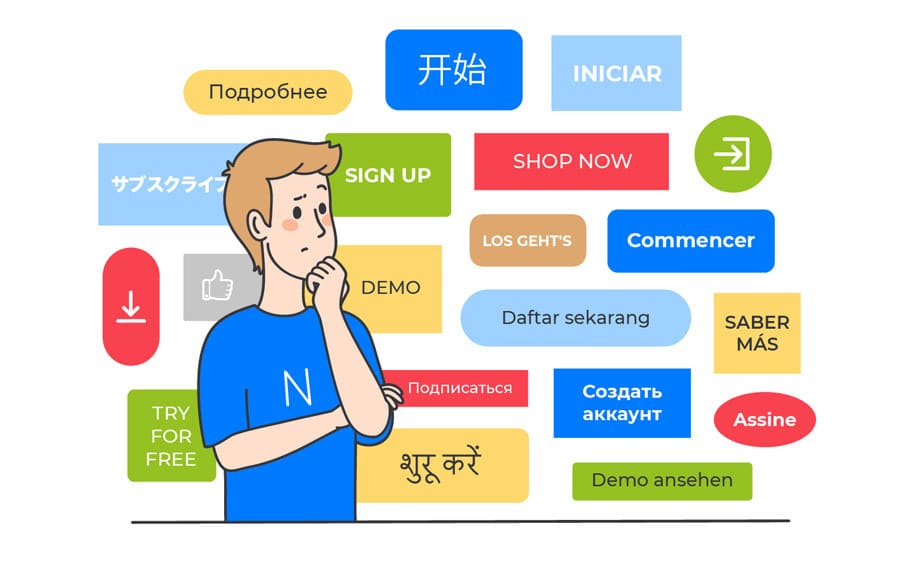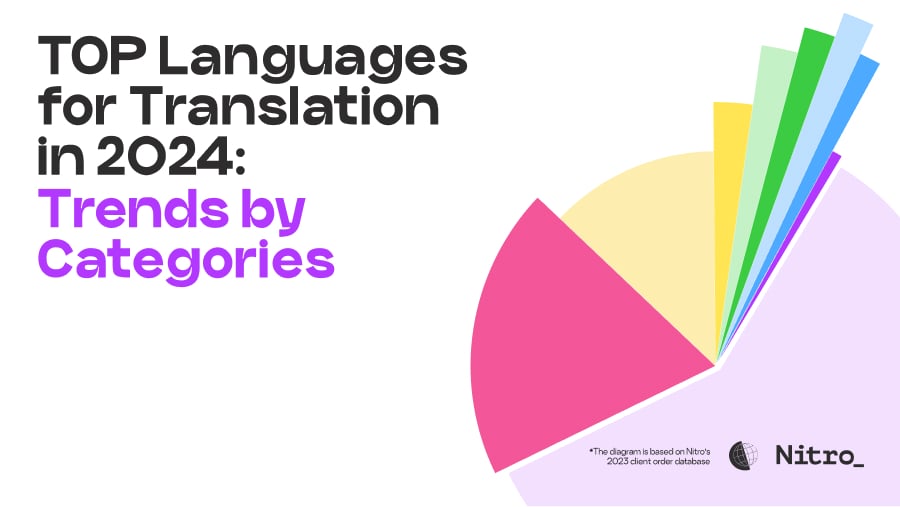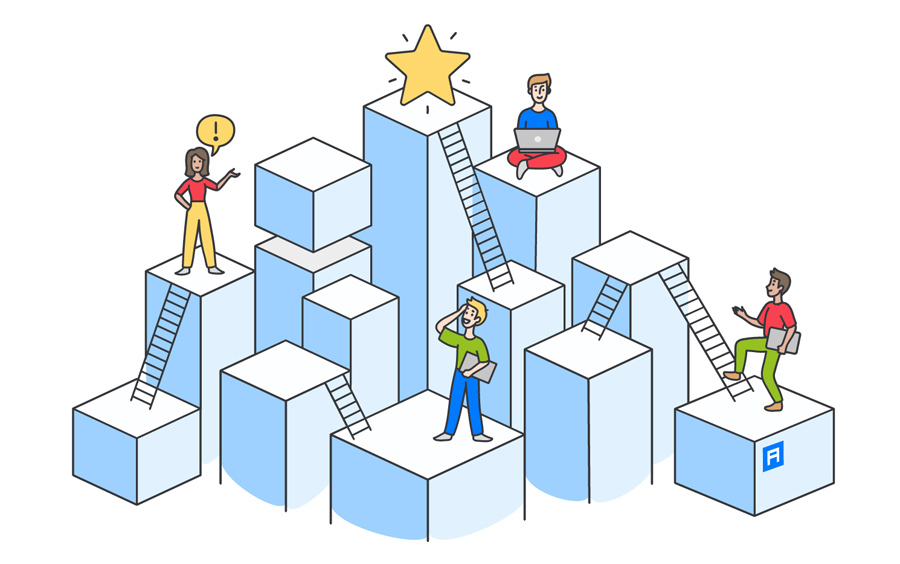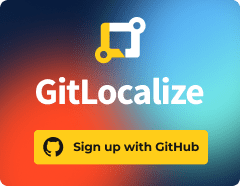Image created by alconost.com
When companies enter new markets and decide to promote their product or service in new regions, they are faced with localizing not only the product itself, but also its marketing. Below we'll discuss marketing localization and share our experience on how to make localizing different types of marketing content as easy as possible.
In the words of Naarg Data Media services by having content only in English you are missing out 80% of users. To build a loyal customer base and build a brand it is needed to localize your marketing content. To unlock global marketing know the art of Marketing content localization and enhance your marketing reach. No longer need to burn money for reaching a wider audience when your audience language is your saviour in staying their heart.
Why not leave everything in English?
The short answer is: personalization.
The more relevant the information is to its recipient, the more likely it is to result in the desired action. And presenting information in a person's native language is the first step in personalization. To win over users, companies strive to speak their language — to sound like "their people." That's why they choose localization.
What is marketing localization?
Let's be quite clear: we're talking about localization here, not about local marketing.
Local marketing is where a marketing strategy is developed almost from scratch when introducing a product or service to a new market. Local marketing includes market research, studying local users and competitors, and developing and testing a local strategy. Sometimes you have to make changes to the product/service. Typically, these projects involve product owners, developers, and marketers. When you need to develop a local marketing strategy in another language, you can employ multilingual digital marketing services.
Now back to marketing localization.
Marketing localization is the translation and adaptation of all marketing content for a product or service for the desired locale. What marketing content needs to be localized? Any materials that help promote the service or product.
Things to consider when you tackle marketing localization
The goal of marketing localization is to convey the content in a way relevant for the target region.
Localized content must remain:
- informative and persuasive, to describe a product or service and motivate to buy;
- creative, to help stand out from competitors and be remembered;
- authentic — after all, it is advertising your particular product.
Translation is only part of marketing localization. For a brand's key message to work equally well in all regions, translation alone isn't enough. For a high-quality localization, sometimes the source information has to be drastically reworked. Copywriting, rewriting, and transcreation are all used.
Take a marketing campaign slogan, for example. Slogans are short, spot-on phrases that often use puns or idioms. To adequately convey the slogan's meaning in the target language, the translator has to be a skilled professional and understand the context.
Transcreation can be helpful in translating slogans.
Transcreation is the process of creatively reproducing content in other languages — in a word, creative translation.
People who do this have to be well versed in the product or service, and also be able to think locally, understanding regional linguistic and cultural particularities.
For example, take the translation of the slogan for Haribo gummy bears. In the original German it runs as follows: "Haribo macht Kinder froh, und Erwachsene ebenso."
Haribo commercial, Youtube.com
This is not just a brand slogan, but also an important element of communication and a rhyming advertising jingle. If it were simply translated into English, it would be: “Haribo makes children happy, and grownups too.” The rhythm is lost; the slogan is no longer catchy.
But with a translator's creative approach, the phrase in English goes like this: “Kids and grown-ups love it so, the happy world of Haribo.” The translation isn't literal, but the idea and values of the brand are conveyed, and the rhyme is also preserved.
Another example, this time regarding the importance of cultural particularities. Localization specialists need to know how people customarily communicate in the target region, because this determines the approach to translation and the tone of the message.
For example, Booking.com took different approaches to the localization of email texts for customers in Israel and Japan.
Hebrew text with reverse translation into English:
Hi {client_name}, We'd love to look into it. Customer service will contact you by phone or email to make sure everything is handled as it should be. Thanks!
Japanese text with reverse translation into English:
Hello {client_name}, Thank you for your inquiry. After looking into the situation, our customer service will contact you by phone or email. Thank you for your understanding.
Due to cultural differences, the Japanese version of the letter is more formal, thanking the recipient twice, while the Israeli version has a friendlier tone.
Let's take a look at our experience with localizing emails and other marketing content.
Localizing different types of marketing content
We've compiled the most frequent marketing translation and localization tasks that customers request at Alconost. These are landing pages, app store pages, advertising, infographics, online banners, reviews, and email marketing.
Landing page localization
Having a landing page in your visitors' native language is more likely to convert them into the targeted action.
A marketing page often needs to be translated into not just one, but multiple languages at once. Even more challenging are frequently updated pages — for example, product pages in online stores. Here continuous localization can be useful, and on platforms like Crowdin these translation projects can be automated. Here's how it works: the marketer adds files for translation, then the manager obtains access and distributes the tasks to translators. The finished translations can be exported manually or automatically via the API. Crowdin offers quick notifications that save time and simplify project coordination, and also has a glossary for translators.
Localization of ASO
Localizing pages in app stores boosts the number of app downloads. There are several stages in the process, including localization of keywords, titles, descriptions, screenshots, and videos.
Often developers with lots of apps need to quickly update app store descriptions for several products at once, and they use different translation APIs. For these purposes it's not always efficient to have your own team of translators. It also presents administrative challenges: the translation tasks are small, and there are many different languages, translators, and updates.
This is often the headache that brings clients to our translation service Nitro. Here Nitro's advantages are fast translation by native speakers, the ability to automate via the API, and a convenient self-service format. There's no correspondence with a manager and no waiting: customers independently place orders from their Nitro dashboard any time of night or day.
Localization of advertising campaigns
Localized ads deliver the message to the user more effectively and produce more app downloads. Many user acquisition managers translate ads using machine translation, often via APIs, then have to test the translated content and choose the text with the best metrics.
Texts produced by machine translation are not always of acceptable quality. Often this depends on the language pair and the topic. On the other hand, employing professional native-speaking marketers for every advertising campaign is an expensive proposition.
For cases like this, Nitro is ideal. The Nitro API for ad localization is unique in that the translation process is automated but translation itself is performed by human professional linguists with knowledge of the given topic. Furthermore, it offers a fast turnaround time for translations — 24 hours or less. This is important when launching ads, which are often run only briefly or are frequently updated.
For high volumes of advertising campaigns, to make scaling more convenient you can obtain ready-made translations via the API. This lets you automate translation of advertising campaigns into as many languages as you need, without sacrificing quality and without a team of local marketers. This swift bulk translation tool proved a good solution for one of our game development clients localizing Google Ads campaigns.

Case Study: One of the major Nitro API clients uses the platform to translate Search Text Ads into 28 languages at once.
Localization of visuals
Marketing content often contains visuals in the form of illustrations, screenshots, and infographics, which need to be localized. Here it's important to remember that text within graphics and screenshots shouldn’t be hardcoded: it must be retrievable, since otherwise the content will remain untranslated.
When preparing visual content for new regions, bear in mind the difference in color perception and character preferences. Consider that localizing this kind of content sometimes requires not only translating the text, but also adapting the visuals.

Localization of a babycare app for Europe, South Korea, Japan, and Brazil
Localization of email campaigns
Our clients often need to send marketing emails to partners who speak other languages. Sometimes one email sequence needs to be translated into 10 or more languages, with these sequences going out several times a week. The texts are needed immediately in all the languages and in very short order. Our client chose Nitro for this task, since the service is specifically designed for fast translation of small texts into multiple languages at once.
It is important to note here that translation quality for marketing texts often depends on having sufficient context (information about the target audience, tone of voice, explanations of terms, etc.). In Nitro, the client can add this information in the comments for the translator.
Localization of online banners
Banners are a simple and effective tool that marketers use to drive visitors to a website and boost brand awareness. Usually banners contain a little text, which also has to be localized.
For these tasks our clients most frequently use Nitro. One important detail: when localizing banner text, it's a good idea to remember about possible character limitations. An advertising phrase in some languages takes up more space when translated, because the words are longer - in German for example.
Incidentally, this is also relevant for advertising with Google Ads: the title and description of the ad must not exceed the possible number of characters.
For mass banner ad creation for different locales, a convenient option is the Nitro + Pikaban bundle. Pikaban is a creative banner generator in which marketers can make animated HTML banners without the aid of a designer. On the dashboard they can upload images; enter the desired text; select a size suitable for Google Ads and other platforms; apply effects; and have the resulting set of banners sent directly to their email. If there are multiple languages, the texts can first be quickly run through Nitro, and then the templates with different languages can be saved in your account.
Localization of reviews
User reviews are also part of marketing. They are needed to increase customer confidence or to provide more information about something. When customers choose a vacation home, they read the reviews of those who have already booked it. Many major lodging search services (such as Airbnb) use machine translation to translate large numbers of reviews. But machine translation is not always a good option, because it can't reliably convey human emotions with accuracy — an important factor for reviews.
Reviews can be translated by human translators in Nitro. Review texts are not typically all that large, and orders like this can literally be completed in just a few hours.
In a nutshell, it turns out that when localizing different types of marketing content, speed, personalization, and creativity are always important, and cultural particularities and limitations (for example, the number of characters) must also be considered.
Now let's talk about what stages marketing localization consists of and how to prepare your project for it.
How localization of marketing works
Localization of marketing consists of several stages.
The first stage is preparation. We've already mentioned the importance of context and of understanding the product and market particularities for quality marketing localization. Often the product owner already has research data for the region, possesses knowledge of the target audience, and has formed a brand image. This information should also be applied to marketing localization.
This means it's a good idea for the client to prepare a localization kit, which includes information about the brand (the product or service) and their ideas about how the brand should “sound” to the user.
This includes the following materials:
- description of the product or service;
- description of the brand, its positioning and target audience;
- style guide, or rules for writing and designing texts;
- tone of the marketing content;
- information about competitors and how this product/service differs from theirs;
- general information on the industry that the client considers important;
- translation memory — a database of previously translated content;
- instructions for translation of terms and specific words,
- limitations, e.g. character limits, etc.
The next step is to request a quote. Here you need to specify the amount of content to be localized, what industry the order is for, the desired time frame, and the file format for the finished translations. The localization partner assesses the task and provides information on the cost. Once the client has approved the cost, time frame, and other nuances, they transfer the actual content to be localized, as well as the localization kit materials. If the client has comments, they can contact the translator and discuss revisions. All this means some time and efforts.
When working via Nitro, the marketing localization process is faster. It looks something like this: the client submits the text for translation, selects the languages, attaches all additional materials, and within 24 hours receives a finished translation via email or the API.
Conclusion
Localization of marketing helps to personalize content for local users. In order for the content to remain creative, generate interest, and convert into action, localization must be professional and unobtrusive. This gives the user the sense of personalization that the product or service was created just for them. Striking the proper key, respect for cultural particularities, compliance with all technical restrictions — there are absolute musts.
For marketing localization, Alconost can be of assistance. Our service Nitro is a great option when you need to regularly translate marketing and other texts into multiple languages at once. The materials will be translated by native translators, taking context into account — quickly and without unnecessary correspondence.









